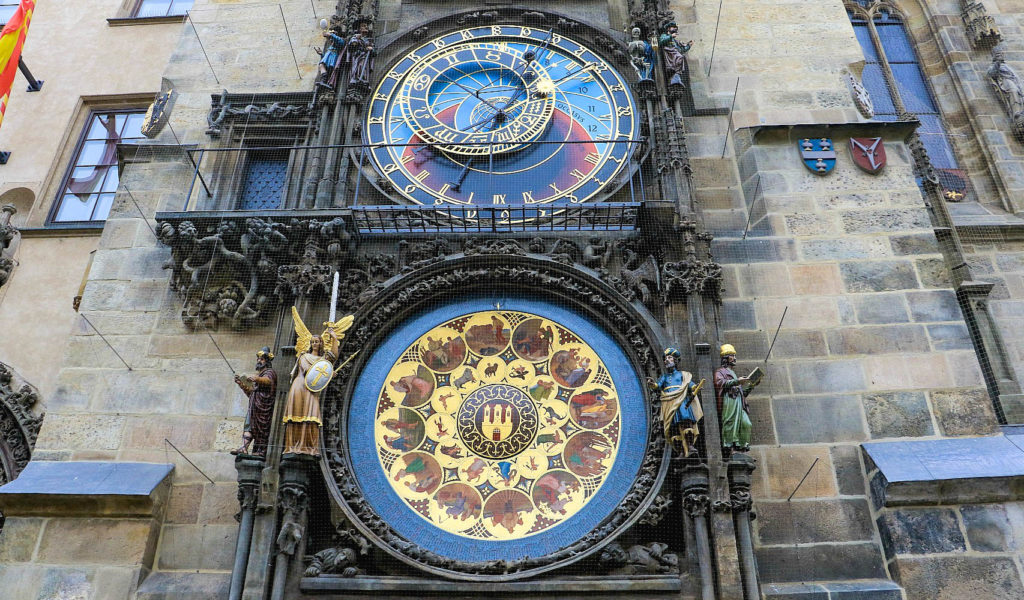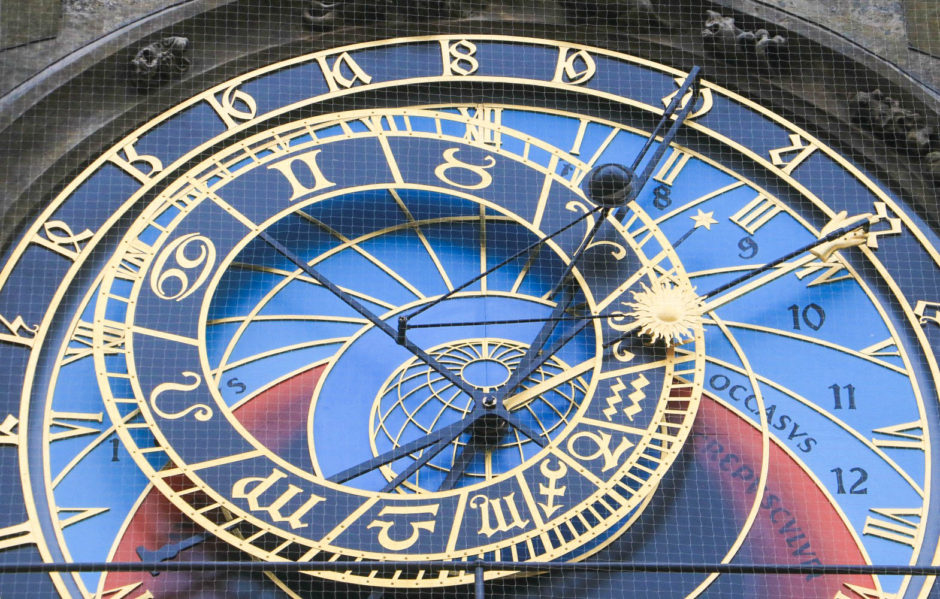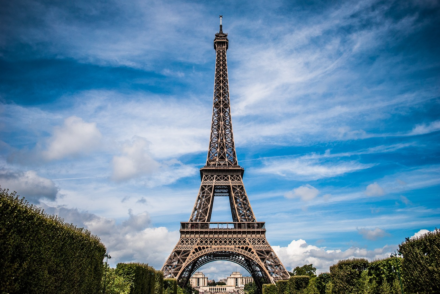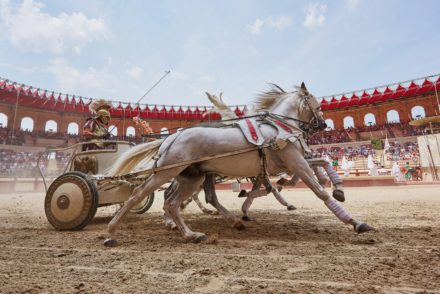We had the best long weekend in Prague earlier this year. Even though the weather had other ideas, the wet certainly didn’t dampen our spirits or stop us exploring this great city.
One of our must-sees was the charming Old Town Square (Staroměstské náměstí). Founded in the 12th century, it’s home to the Baroque Church of St Nicholas, the Rococo Kinský Palace, the Gothic House at the Stone Bell, the Jan Hus statue and the magnificent Church of Our Lady before Týn.
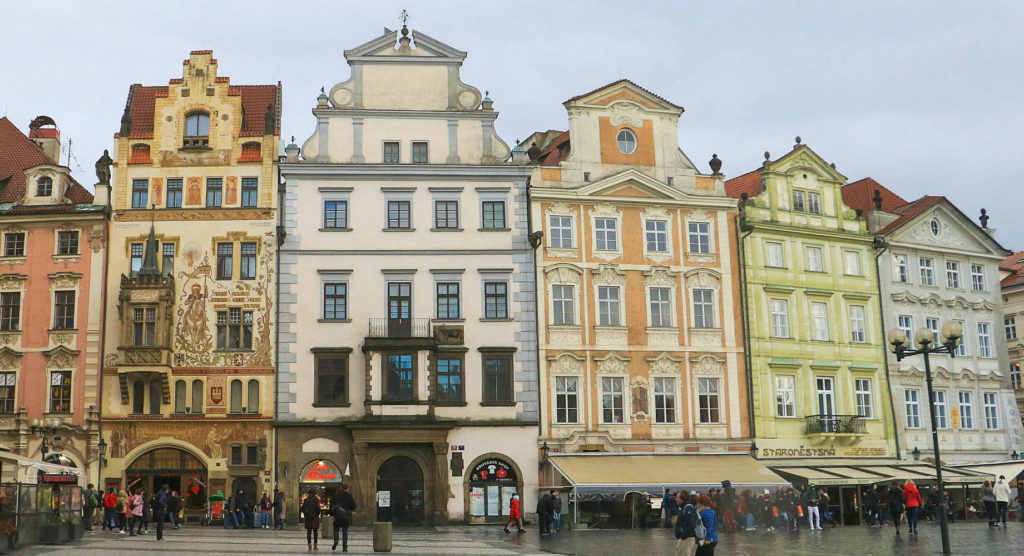
Not forgetting, of course, Prague’s 600-year-old astronomical clock (The Orloj) – one of the oldest fully functional astronomical clocks in the world. In addition to showing the time, the position of the sun, the phase of the moon and astronomical cycles, it comes alive on the hour every hour with chiming bells. Apostles and statues can be seen too so it’s certainly worth a watch, even if the movements are subtle.
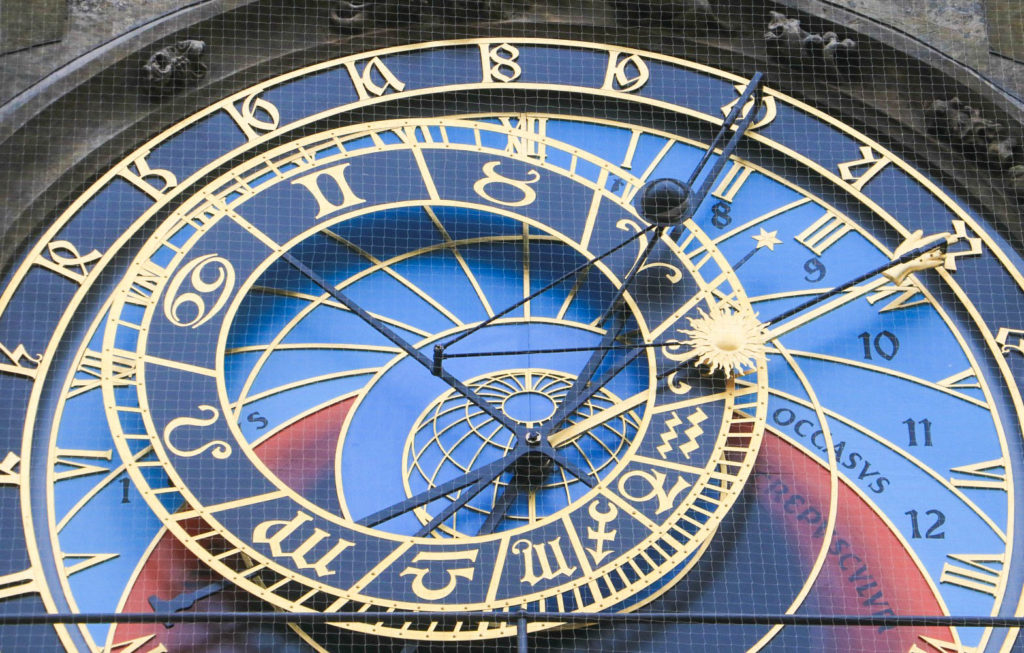
The clock has the most exquisite dial which represents the sun, the moon and the astronomical details. An astronomical dial was commonly used in medieval times for telling the time. The outermost ring in the background comprises of glyphs from ancient Czech times and Roman numerals. The blue and red colours indicate sunrise and sunset in addition to the tropics and the equator with the Earth at the centre of the dial. On the astrolabe sits the golden ring with signs of the zodiac.
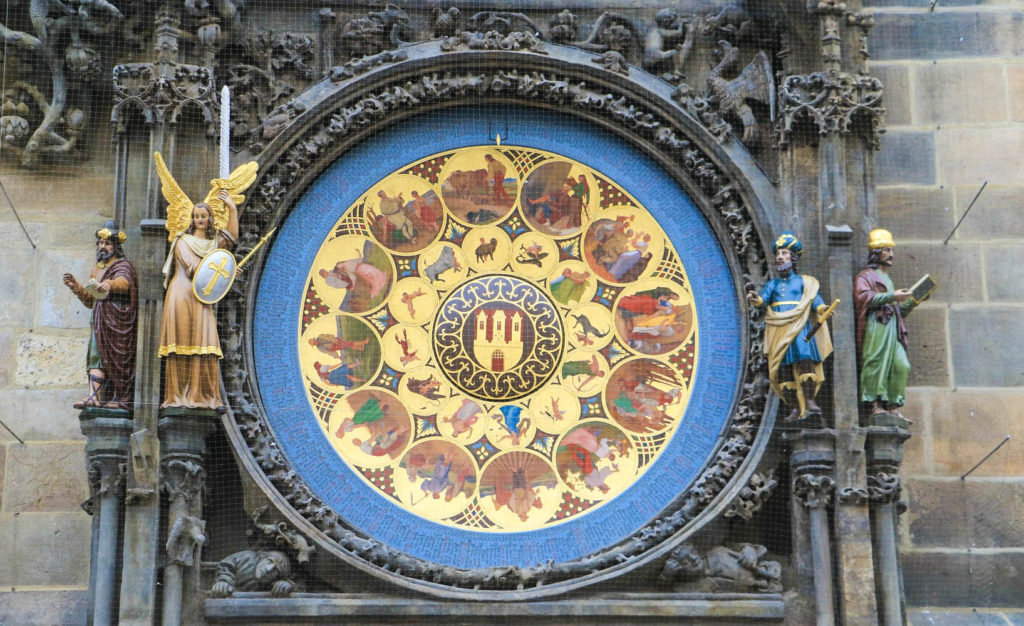
The blue doors above the clock reveal the apostles who are animated between 9am and 9pm each hour on the hour, along with the sound of the bell. The calendar dial sits below the clock to represent calendar months. The astronomical clock was built in 1410 with the calendar dial and gothic statues added around 1490 and in the 1600s. The tower’s golden rooster was added around 1865. It’s said the clock was built by Mikuláš of Kadaň and not Jan Růže (Hanuš) as originally thought. The clock was badly damaged in World War II but has since been renovated, the last time being in 2018. It really is a beautiful sight and certainly, a must-see when you’re next in Prague.
